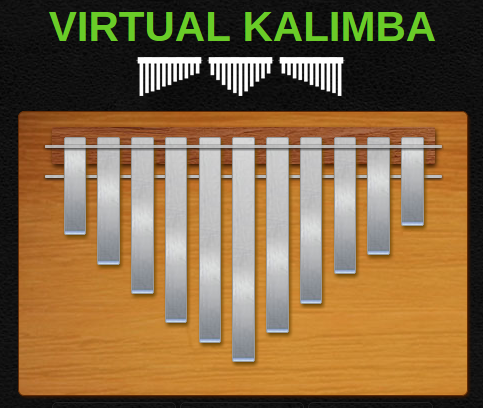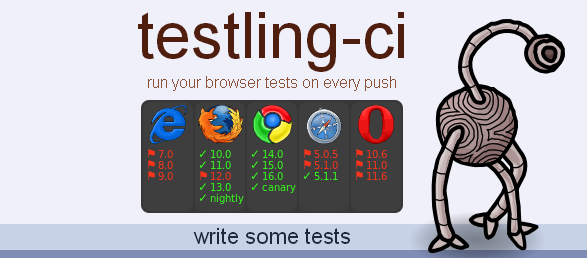Virtual Kalimba

Visit the site for keyboard shortcuts, tips & tricks, and interactive production of sound!
The website is an experiment in Web Audio by Middle Ear Media.
The Web Audio Tutorials page at Middle Ear Media has eight (8) tutorials on Web Audio.
Demo apps:
Apps are everywhere. While native mobile apps get a lot of attention, web apps have become much more powerful in recent years. Hopefully you can find something here that will stimulate you or improve the quality of your life in some way.
Web Audio Loop Mixer
Web Audio Loop Mixer is a Web Audio experiment created with HTML5, CSS3, JavaScript, and the Web Audio API. This web app is a stand alone loop mixer with effects. It allows up to four audio loops to be boosted, attenuated, equalized, panned, muted, and effected by delay or distortion in the browser.
Virtual Kalimba
Virtual Kalimba is a Web Audio experiment created with HTML5, CSS3, and JavaScript. It uses the Web Audio API to recreate a Kalimba, also known as an Mbira or Thumb Piano. This is a traditional African instrument that belongs to the Lamellophone family of musical instruments.
Virtual Hang
Virtual Hang is a Web Audio experiment created with HTML5, CSS3, and JavaScript. It uses the Web Audio API to recreate a Hang, a steel hand pan instrument. The Hang is an amazing musical instrument developed by Felix Rohner and Sabina Schärer in Bern, Switzerland.
War Machine
War Machine is a Web Audio experiment created with HTML5, CSS3, and JavaScript. The App uses the Web Audio API to create a sample pad interface reminiscent of an Akai MPC. The purpose of War Machine is not to promote violence, but rather to create a safe (victimless) environment for the release of excess aggression.
Channel Strip
Channel Strip is a Web Audio experiment created with HTML5, CSS3, JavaScript, and the Web Audio API. This web app is a stand alone audio channel strip that allows an audio signal to be boosted, attenuated, equalized, panned, compressed and muted in the browser. The audio source is derived from user media via file select input.
Task Managment
A fast loading Web App for managing tasks online. This App offers functions such as editable list items, removable list items, and it uses localStorage to save your information in your own browser.
On War Machine, the top row, third pad from the left comes the closest to an actual gunshot sound.
Works real well with the chorus from Anders Osborne’s Five Bullets:
Boom , boom, boom, that American sound
Teenage kids on a naked ground
Boom, boom, boom, that American sound
Five bullets in Pigeon Town
For more details on Anders Osborne, including lyrics and tour dates, see: Ya Ya Nation.
I first saw this in a tweet by Chris Ford.

